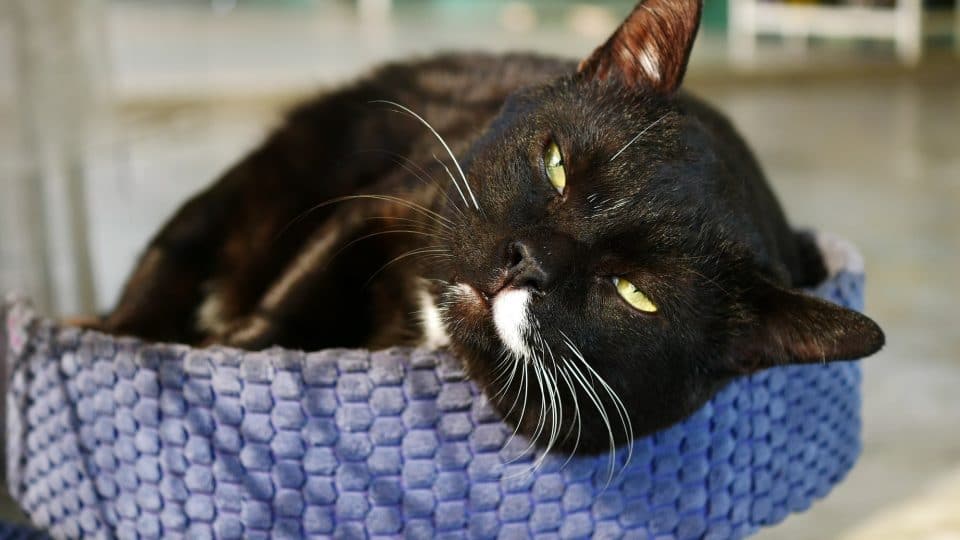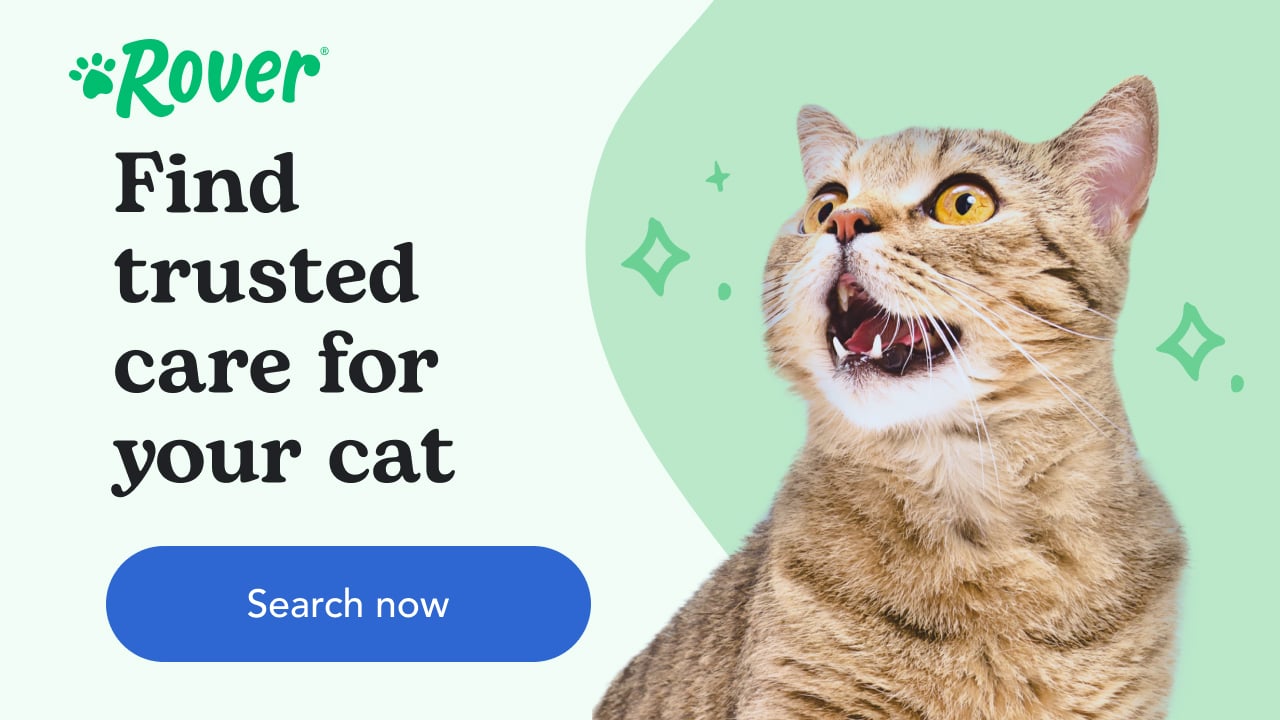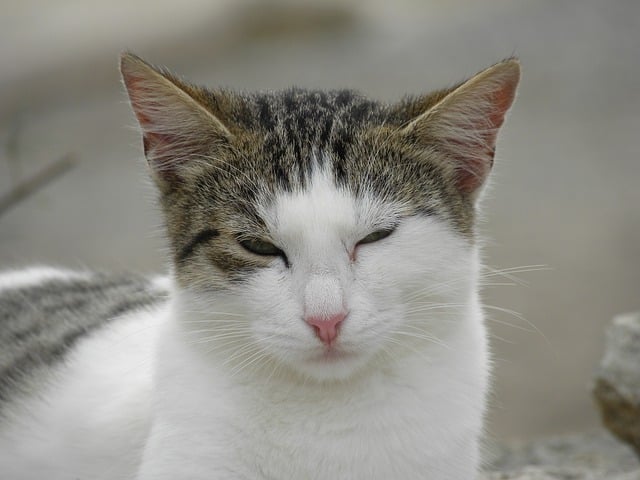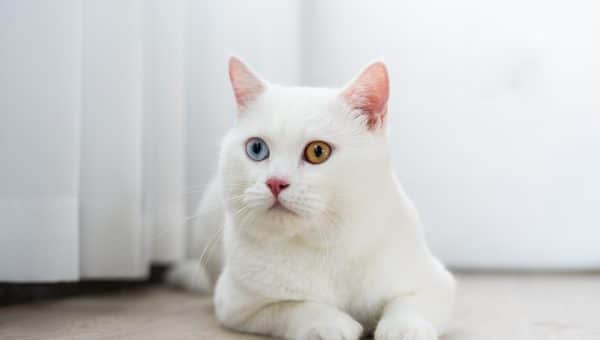As much as we wish our pets could talk like us, they sadly can’t. But, thankfully, they communicate in many ways other than words, allowing us an insight into whether they’re happy, sad or scared. Cats can converse through an extensive repertoire of tail movements, vocalisations (really, what can words relay that can’t be said with a hiss?), and eye contact. One of these endearing communication methods is the ‘slow blink’, but what does it mean? Turns out, a lot!
Let’s start with some basics of cat eye contact.
Cat Eye Contact
Cats do indeed talk with their eyes. There are some basic things you can learn from observing your cat watching something or someone.
I’m relaxed: In this case, your cat’s pupils should be normal size and their eyes not super-focused on anything in particular; they may be even half-closed.
I am most definitely not relaxed: If your cat is frightened or upset their eyes will be wide-open and pupils dilated. If there is a certain thing or someone frightening them it’s usually easy to locate by following the direction of the laser gaze.
I want to play: In my house, this begins as a direct stare at me and as soon as I make eye contact, the cats look at the toy basket, therefore directing my gaze as well. Many times, the pupils will become dilated and their eyes will dart around to look for the toy they want to play with.
I’m tired: In this case there may be slow blinks but they generally will not be directed at you.
I like you: The slow blink has traditionally been believed to be an expression of affection. This usually happens when a cat is relaxed and still and staring directly at you. Once the cat has your attention they will proceed to give you one, or a series of, slow blinks. If you have been blessed enough to be on the receiving end of the slow blink, you can likely confirm it is, indeed, heart-warming. And, according to science, you would also be scientifically correct.
The Science Behind the Slow Blink
A recent study at the University of Sussex in the UK found evidence that the cat slow blink is akin to the human smile. In reviewing the study, the folks at Science Alert report: “Scientists were able to confirm that this expression makes cats—both familiar and strange—approach and be receptive to humans.”
To reach this conclusion, the researchers performed two tests. In one, cat owners were directed to sit near their cats and once kitty was settled and comfortable, to commence slow blinking at them. “The results showed that cats are more likely to slow blink at their humans after their humans have slow blinked at them,” reports Science Alert. In the second study, researchers asked strangers to slow blink at cats. The result was the same—cats were more likely to approach and respond to a human who has slow blinked at them.
The study’s supervisor, psychologist Karen McComb, a professor at the University of Sussex says: “It is something you can try yourself with your own cat at home, or with cats you meet in the street. It’s a great way of enhancing the bond you have with cats. Try narrowing your eyes at them as you would in a relaxed smile, followed by closing your eyes for a couple of seconds. You’ll find they respond in the same way themselves and you can start a sort of conversation.”
Dr Tasmin Humphrey, who first authored the study, notes: “In terms of why cats behave in this way, it could be argued that cats developed the slow blink behaviours because humans perceived slow blinking as positive. Cats may have learned that humans reward them for responding to slow blinking. It is also possible that slow blinking in cats began as a way to interrupt an unbroken stare, which is potentially threatening in social interaction.”
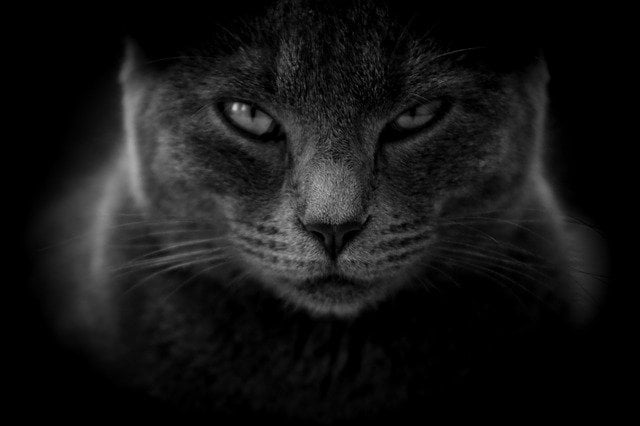
Image by DivvyPixel from Pixabay
When the Slow Blink Means Something Else
Sometimes the slow blink can mean there’s something going on with your cat’s health. While we know that a slow-blinking cat is generally a content one, anything out of the ordinary could be cause for concern.
If your cat is blinking rapidly or squinting for extended periods there could be something in her eye(s). It can also be a sign of more concerning conditions including eye trauma, conjunctivitis, uveitis, or blepharitis. Some of these are less serious than others but when it comes to your cat’s beautiful, soul-searing peepers, you can never be too careful. Be sure to check any concerns with a vet to ensure you continue to get (and give) as many slow blinks as your heart can handle.
